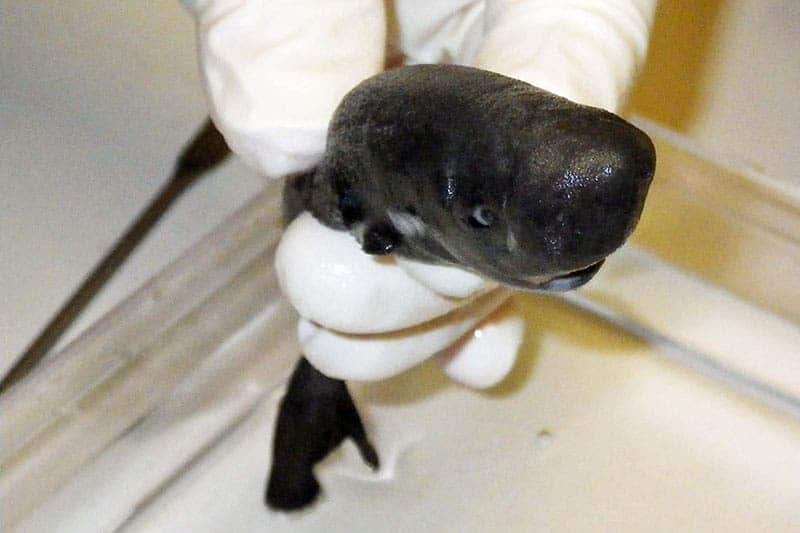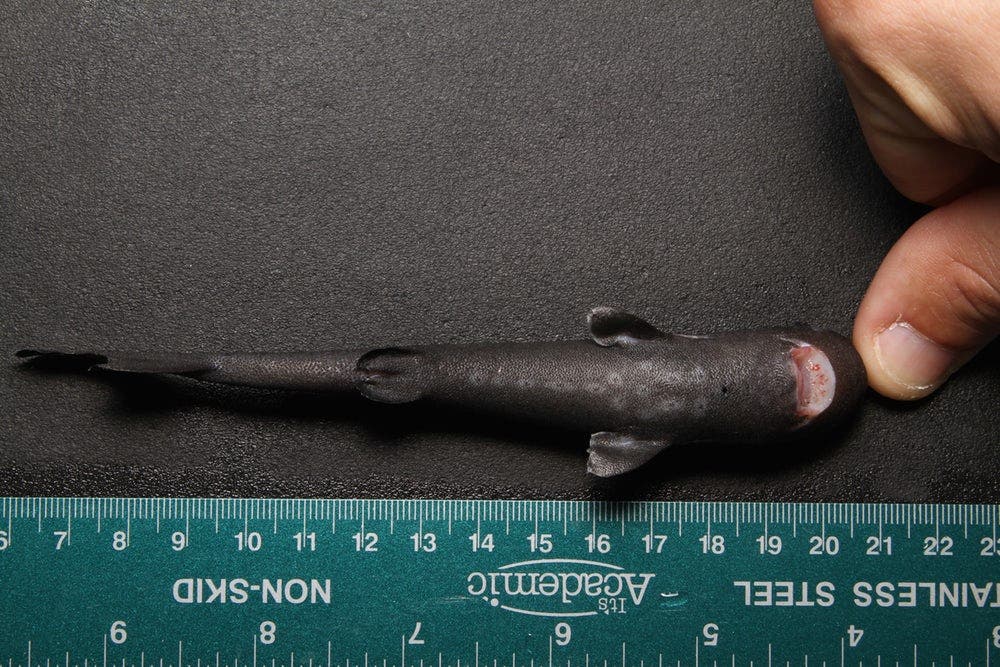There are only two known species of pocket sharks: one of them lives deep in the Gulf of Mexico and glows in the dark. This species was just formally described by researchers at Tulane University.
Sharks have a really bad (and unwarranted) reputation. Millions of people can’t enjoy the ocean as much as they would like to because of their fear of sharks — a fear instilled by the 1975 release of the movie Jaws and perpetuated by subsequent films like Open Water and The Shallows ever since. However, the truth is shark-related incidences are very rare. According to the International Shark Attack File, in 2016 there were 81 unprovoked attacks worldwide, of which only four were fatal. And although to most people the word “shark” conjures up mental images of menacing great whites, there are more than 500 different shark species, the vast majority of which are completely harmless.
One such harmless species is the American pocket shark (Mollisquama mississippiensis) a pocket shark that was discovered in the central Gulf of Mexico in February 2010 but which was formally classified just recently. This tiny shark measures only 14 centimeters (5.5 inches) in length and has two defining features.
For starters, it features pockets tucked in behind its pectoral fins (hence its name), and secondly, it also sports glands that produce a bioluminescent fluid. It is only the 3rd known shark species that may squirt luminous, glow-in-the-dark liquid.
“In the history of fisheries science, only two pocket sharks have ever been captured or reported,” said Mark Grace, a biologist at the National Oceanic and Atmospheric Administration (NOAA).
“Both are separate species, each from separate oceans. Both are exceedingly rare.”
Compared to the other pocket shark originally found in the Pacific Ocean, the American pocket shark not only has light-producing photophores covering much of its body but also fewer vertebrae. In order to identify and classify the new shark species, Tulane researchers used a dissecting microscope, along with X-ray imagery and high-resolution CT scans.
“The fact that only one pocket shark has ever been reported from the Gulf of Mexico, and that it is a new species, underscores how little we know about the Gulf – especially its deeper waters – and how many additional new species from these waters await discovery,” said Henry Bart, director of the Tulane Biodiversity Research Institute.











